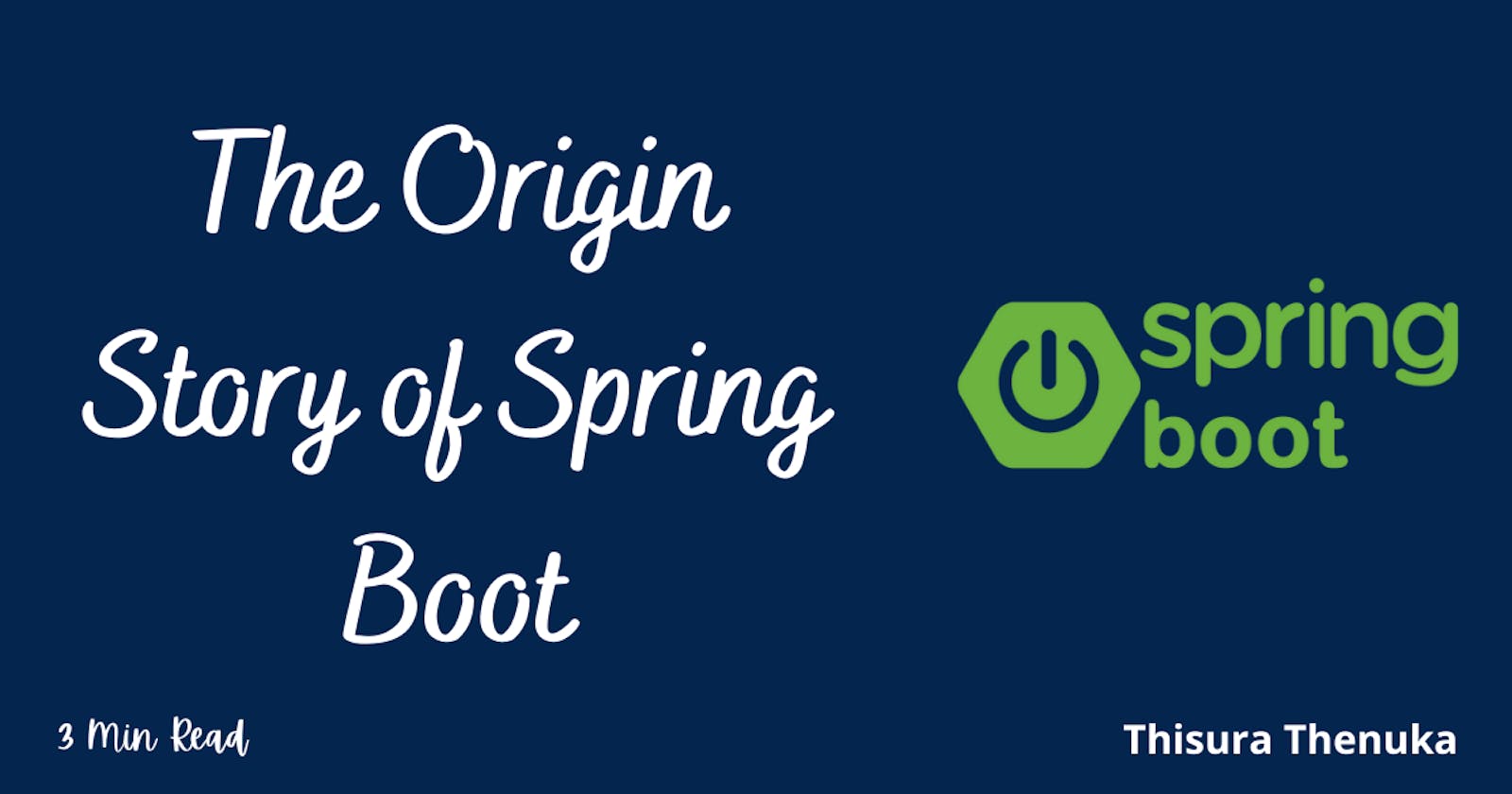Spring Boot Unveiled: Decoding the Magic Behind Effortless Java Development
Dive into the heart of Spring Boot as we unravel its core principles, from the magic of auto-configuration to the simplicity of embedded servers.
If you are a Java developer in today's world, you may have considered learning Spring Boot. Or, you might be already writing code in Spring Boot projects without having a proper understanding of how it originated. To fully understand how Spring Boot works, we have to learn how Spring framework works.
Spring framework was initially released in 2002. How are we supposed to learn 21 years' worth of stuff?
Yeah, it can be a daunting task. But if we can understand the key concepts, everything will start to make sense. Let me take you on a journey to explain how Spring Boot originated and its main features.
The Spring Framework
Period - Early 2000s
Why - For building enterprise Java applications
Key Features :
Inversion of Control (IoC)
Aspect-Oriented Programming (AOP)
Data Access and Transaction Management
Challenges :
XML Config Hell - It heavily relied on XML configurations which led to complex setups
Boilerplate Code - Developers had to write a lot of boilerplate code to get simple things done
Complexity in integrating with other frameworks and technologies
Manual Bean(dependency) wiring
Managing Bean Lifecycle
The Spring team wanted to streamline the development process and overcome these challenges.
Spring Boot: Slim, Turbocharged sibling of Spring
Period - 2004
Why - Built on Spring framework foundations. Designed to simplify the process of building production-ready Spring applications
Key Features :
Less boilerplate code. No XML configs required
Comes with sensible default configurations
Embedded web servers and built-in monitoring tools
Let me go through the key abstractions in Spring Boot.
Spring Boot Starters
What - Pre-configured templates with common dependencies and configurations for specific tasks or technologies
Why - Simplify dependency management. Reduce the need for manual configs
Examples :
spring-boot-starter-web- For web apps (Has Spring MVC, Tomcat etc.)spring-boot-starter-data-jpa- For JPA-based data access (Has Hibernate, Spring Data JPA and a database driver)spring-boot-starter-security- For handling security concerns (Has Spring Security and related security libraries)spring-boot-starter-test- For testing (Has JUnit, Spring Test and related testing-related libraries)
Auto Configuration
What - Spring Boot automatically scans the classpath to identify libraries and automatically configures them
Notes :
We can use application properties or write a custom config class to override default configurations
We can exclude Specific auto-configurations with the
excludeattribute.
Embedded Web Server
What - Spring Boot comes with embedded web servers (Tomcat, Jetty, Undertow)
Why - To eliminate the need for external server setup and simplify deployment
We can customize embedded server settings with application properties or a custom config class
Spring Boot Actuator
What - Spring Boot comes with built-in tools for monitoring and managing applications
Features :
Health Endpoint - Get insights regarding the application's health
Metrics Endpoint - Expose various metrics related to performance and usage
Info Endpoint - Expose application-specific details
Notes :
We can write custom endpoints to expose application-specific details
If we are using Actuator endpoints, we have to secure the endpoints properly.
Conventions over Configurations
Spring Boot has sensible default configurations that work out of the box.
Spring Boot has a standard project structure and naming conventions
Annotations like
@Valuecan help to inject properties directly into components
Packaging and Deployment
Packaging options are JAR (Java Archive) or WAR (Web Application Archive).
WAR requires an external servlet container for deployment while JAR does not need anything like that.
That's all I have for you today. I'm hoping to do an article series on Spring Boot and explain the concepts and design patterns. If you are interested, you can join our small community by following me. See you soon 🙌
